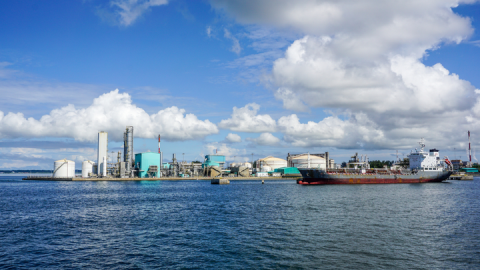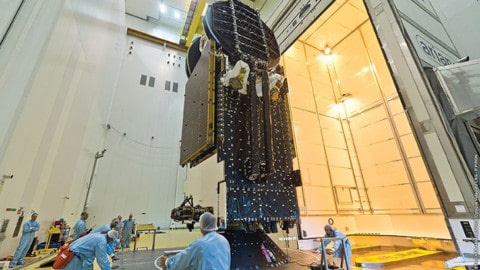Sulphide build up is a problem endemic to water utilities around the world, resulting in infrastructure damage, odour issues and potential health hazards. In 2014, Griffith City Council overhauled its corrosion and odour control regime, contracting Melbourne-based company Biosol to apply its innovative sulphide control solution across the Griffith sewerage system. Subsequent data comparisons revealed that Biosol achieved results equal to or far exceeding those of the old corrosion and odour control method. Furthermore, this was achieved while dosing at significantly lower volumes, reducing the infrastructure required for dosing, and eliminating the need for operators to handle hazardous chemicals.
Applying Biosol in the field
The sewerage system of Griffith (NSW) provides near-perfect conditions for sulphide build up and the implicit odour and corrosion problems. These include temperatures in the summer months averaging in excess of 30°C, slower sewage flows and longer retention times due to an oversized sewer network.
In February 2014, Griffith City Council awarded Biosol a contract for the supply of sewerage treatment chemicals to combat odour and corrosion. Previously, the council had been controlling sulphides by dosing magnesium hydroxide liquid (MHL) and ferrous chloride, a treatment widely considered to be one of the most effective corrosion and odour management solutions available.
In April 2014, Biosol began dosing BRX-2DE (a proprietary sulphide control product) and BRX-1CN (a nitrite-based product) at pump stations across the Griffith area. As Biosol was dosing at volumes 65 per cent less than the old treatment regime, existing infrastructure was used at reduced capacity where appropriate and smaller low-cost dosing setups were installed where existing equipment could not be used.
Griffith City Council had collected hydrogen sulphide (H2S) data using ‘OdaLog’ devices in the field for a number of years and continued to do so after switching treatment regimes. This meant that accurate data was available with which to compare the effects of the old dosing regime to Biosol’s. System inputs, outputs and various other environmental conditions were also monitored, allowing Biosol to account for any changes in sewer conditions, such as increased or decreased load, when comparing the results of the different treatments.
Revolutionary results
Throughout Griffith’s sewer system, Biosol dosing achieved hydrogen sulphide levels that were, at worst, equal to those of the former dosing regime, and in some cases, significantly better. For instance, data from one major pump station demonstrated a reduction in annualised average H2S
of 90 per cent.
A number of other benefits were observed throughout the system after replacing the MHL and ferrous chloride dosing with Biosol. The bacteria that reduce sulphate to produce sulphides are intrinsically linked to those bacteria that produce the greenhouse gas, methane. An increase in sulphide is associated with a proportionate increase in methane. Therefore, by implication, the measured reduction in H2S should be expected to be accompanied by a proportionate reduction in the amount of methane produced throughout the sewer system.
Reduced influent phosphorus to the treatment plant was also observed under the new dosing regime. This has meant that Griffith City Council has been able to reduce the amount of alum they needed to dose at the plant for phosphorus removal, resulting in cost savings.
Additionally, the ferrous chloride dosed as part of the old regime, had the potential to reduce the effectiveness of UV disinfection that occurred later in Griffith’s sewage treatment process. As Biosol does not dose chemicals that obscure UV transmission, the performance of UV sterilisation has not been impeded.
Since Biosol dosing commenced, cleaner sewer pipelines have been observed. Biofilms can facilitate the build up of material (such as fat, oil and grease) on the sewer walls; this too is removed when the biofilm disperses, improving hydraulic efficiency.
Combatting sulphides in sewers
Sulphuric acid corrosion causes significant and costly damage to sewer infrastructure, including concrete pipes, pump stations, manholes and electrical components. Within Australia, the cost of asset degradation due to sulphide-induced corrosion is estimated at around $100million per year. Additionally, hydrogen sulphide (H2S) gas has a distinctive and unpleasant rotten egg smell and is a frequent cause of odour problems. As a result, many water utilities have developed odour and corrosion management strategies to combat sulphides.
Methods to combat corrosion and odour rely on knowledge of how sulphides are produced. Hydrogen sulphide is produced largely due to the action of sulphate-reducing bacteria (SRB) in anoxic (or oxygen-depleted) conditions. Such conditions are caused by aerobic bacteria consuming available oxygen when metabolising the rich source of organic matter provided by sewage.
At the point conditions become anoxic, sulphate-reducing bacteria respond to the new conditions increasing both their metabolic and reproduction rate in the slime layer.
As the bacteria metabolise the sewage’s sulphate, a process known as the sulphide cycle occurs. The cycle involves four major stages, the conversion of sulphates to sulphide by the bacteria in the slime layer that occupy the pipe walls; the conversion of dissolved sulphide to odorous hydrogen sulphide (H2S) gas; the production of sulphuric acid (H2SO4) due to the oxidation of built-up (H2S) in the sewer atmosphere; and the corrosive action of this acid on the sewer walls and other surfaces it comes into contact with.
Currently, the most commonly used sulphide solutions involve disrupting the sulphide cycle at its second stage, by dosing chemicals that act to prevent the conversion of dissolved sulphide to H2S. However, Biosol’s solution effectively, cheaply and safely disrupts the first stage of the cycle, preventing the bacteria from producing the sulphide in the first place.
A paradigm shift in sulphide control
Biosol’s sulphide management solution acts on the biofilm itself (the source of the problem), preventing the build up of sulphides from ever occurring. Biosol effectively causes the colonies of sulphur-reducing bacteria in the biofilm to disperse by exploiting the chemical signals they use to communicate with one another.
Biosol’s product BRX-2DE, a proprietary blend of bacterial cell signalling chemicals (CSCs). These CSCs disrupt the normal communication signals between the bacteria which causes them to change state from a floc / biofilm form to a single cell planktonic form. As a result, the biofilm disperses and the sulphide cycle is interrupted, removing the cause of sewage odour and corrosion. As the CSC’s bio-degrade (8-12 hours in sewers) biofilm/flocs reform unless dosing is continued.
Comparatively small doses of BRX-2DE are required and the overall action of BRX-2DE can be amplified with the addition of nitrite, as was done in Griffith. Importantly, unlike many of the chemicals used in other sulphide control methods, all Biosol products are non-hazardous, reducing risk to operators and improving health and safety outcomes.
The results achieved in Griffith City Council’s sewer system demonstrate that Biosol has the potential to achieve better results than a market-leading sulphide management solution, while also being safer, reducing costs, minimising the dosing infrastructure required and potentially offering a range of other positive side effects. As a result, Biosol’s innovative solution has the potential for a paradigm shift in odour and corrosion control, offering asset owners a better way to combat sulphides and substantially increase sewer asset life.
Contact: Nick Chandler 0400 372 003 or Ross Chandler 0400 372 000 Email: [email protected].













